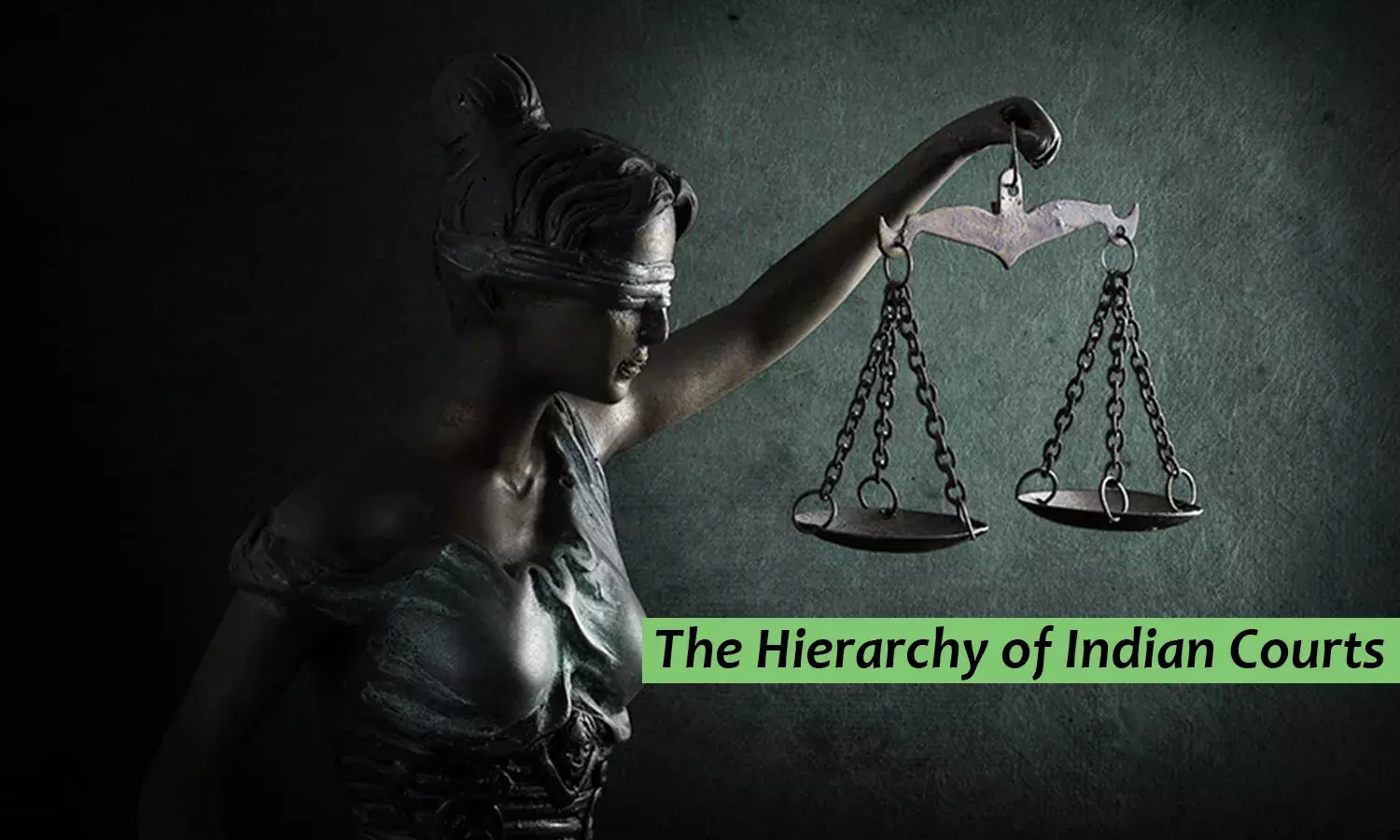The Hierarchy of Indian Courts
The Indian Judiciary is the guardian of the Constitution of India. For a democracy like India to function effectively, it is imperative to have an impartial and independent judiciary. Considering the size of the country, the Indian judiciary is divided into several levels in order to decentralize and address matters at the grassroots levels.;

The Hierarchy of Indian Courts The Indian Judiciary is the guardian of the Constitution of India. For a democracy like India to function effectively, it is imperative to have an impartial and independent judiciary. Considering the size of the country, the Indian judiciary is divided into several levels in order to decentralize and address matters at the grassroots levels. The Judicial...
The Hierarchy of Indian Courts
The Indian Judiciary is the guardian of the Constitution of India. For a democracy like India to function effectively, it is imperative to have an impartial and independent judiciary. Considering the size of the country, the Indian judiciary is divided into several levels in order to decentralize and address matters at the grassroots levels.
The Judicial System in India is divided into three categories - the Apex Court or the Supreme Court of India, the High Courts in respective states and union territories and lower courts at the district level.
Apex Court: Supreme Court of India
The Supreme Court is the highest level of the Indian judicial system. It was established under the provision of Part V Chapter IV of the Constitution of India. The said provision ratified the concept of the Supreme Court as the Federal Court acting as the guardian of the Constitution of India. Also, it is the highest court of appeal.
Articles 124 to 147 of the Indian Constitution determine the jurisdiction and composition of the Supreme Court.
The Supreme Court accepts to hear the appellate matters against the orders passed by the High Courts, under its power of appellate jurisdiction.
The Court also hears writ petition under the provision of Art. 32 of the Indian Constitution when there is a suspension of the fundamental rights or a violation of human rights. The writ petitions do not require to follow any hierarchy; it can directly reach the Supreme Court. The article confers rights to ensure remedies through the constitution.
There are 30 judges in the Supreme Court, including the Chief Justice of India. The proceeding of the Supreme Court is heard in only English.
Supreme Court Rules, 1966 are framed under Article 145 of the Constitution to regulate the practice and procedure of the Supreme Court. Article 141 of the Constitution of India stipulates that the law declared by the Supreme Court shall be binding on all Courts within the territory of India.
High Courts
High Courts are the second-highest court in the judicial hierarchy. They are governed by the bindings conferred by the Supreme Court of India so far as judgments and orders are concerned.
Article 214 Part IV Chapter V of the Constitution of India specifies the power of the High Courts in India. There are 25 High Courts in India, out of which Calcutta High Court is the oldest one.
The High Courts are limited to the jurisdiction of the State, group of states and Union Territory. The High Court governs the jurisdiction of the lower courts - district court, family court, civil and criminal court and the other courts of the districts.
The High Courts have the jurisdiction of hearing the appeals from the district court orders. High Courts are mainly exercising their jurisdiction related to the civil or criminal domain if the lower courts are proved incapable of exercising their power as per authorization extended by law. These situations may be generated through the inability of financial or territorial jurisdiction. There are specific areas in which only High Courts can exercise the right for hearing like cases related to Company Law as it is designated especially in a state or federal law.
The Court has the power to hear the writ petition under Article 226, regarding any violation or threat to the fundamental right or human rights within the territory of the state.
The high courts with the handling of most of the cases of a particular area are provided with the facility of permanent benches or branches of the court situated there only. To serve the complainants of remote regions the establishment of circuit benches had been made to facilitate the service with the schedule of operation as per the occurrence of the visit of the judge.
Lower Court: District Court
Under the discretion of the state government of the union territories, the courts are structured mainly under several factors like the number of cases, distribution of population, etc. Depending upon those factors the state government takes the decision of numbers of District Courts to be in operation for the single district or clubbing together different adjacent districts.
The jurisdiction of the district court is limited to the territorial extent of the district and the district judges are appointed by the state government.
The subordinate courts covering the civil cases, in this aspect are considered as Junior Civil Judge Court, Principal Junior and Senior Civil Judge Court, which are also known as Sub Courts, Subordinate Courts. All these courts are treated with ascending orders. The subordinate courts covering the criminal cases are Second Class Judicial Magistrate Court, First Class Judicial Magistrate Court, and Chief Judicial Magistrate Court along with family courts for dealing the matrimonial issues.
Village Court: Panchayat
Panchayat is an extra-judicial body, where the matters are solved through mediation. However, the Panchayat cannot force any of the parties to obey its order, neither can pass a punishment.
India has experienced and still experience evil activities like Khap Panchayat imposing their decision in personal matters like matrimonial matters, that is not a judicial proceeding, rather persons ionvolve3 in these kinds of activities are punished.
Out of Court Settlement: Lok Adalat
Lok Adalat is an extra-judicial body, where the parties wishing to release each other from the existing judicial proceeding and solve the matter through mediation, can take it to the Lok Adalat, which is presided by retired district judges, respected government official and other eminent personalities, whom the general public of that area obeys (often a school headmaster in a rural area).
The decision is finalised upon the points of agreement between the parties, and the decision passed by the Lok Adalat requires to be validated by the District Court.





